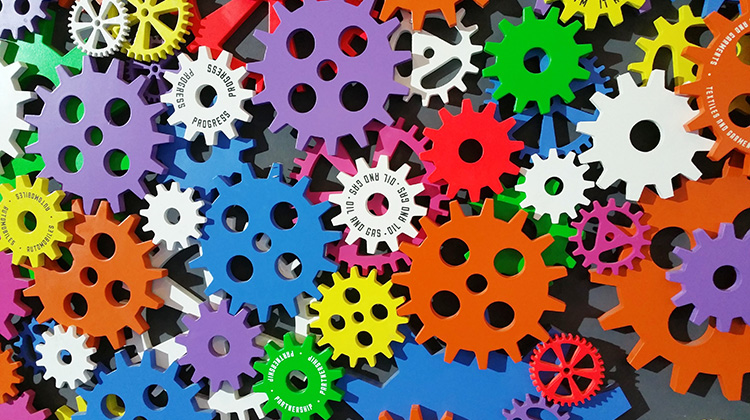STE(A)M is about integration

Lightning-speed learning on circuitry for a light festival; sleuthing water samples from the local river to measure the effect of pollution; controlling a chain reaction with a Rube Goldberg machine to grasp Newton’s Laws of Motion are some projects that provide multidisciplinary learning opportunities that could be done under the STE(A)M umbrella.
Dr Jane Hunter of the University of Technology Sydney, says the whole point of STEM is to integrate subjects: to bring them together to solve complex problems and she’s an advocate for STEAM over STEM, the arts are an essential part of what makes the area so rich.
Four years ago, Dr Hunter was invited by school leaders to work with teachers in their schools to build professional confidence and capacity in STEM subjects, to set up integrated teaching and learning opportunities, provide elbow-to elbow support in classrooms, and then set about understanding what happened.
Students and teachers from diverse schools loved Integrated STEAM, says Dr Hunter. “They were enthusiastic about participating in authentic and meaningful learning instead of being more passive and experiencing each subject as separate from the other.”
“It was a real eye opener to trust the students and give them more ownership over complexity in their learning in multiple curriculum areas,” said one teacher.
“When the students learned how a machine works, they had to make up their own questions. It gave them more agency and took them to content in areas they wanted to explore. It was great. The students changed the way I teach. They led the way, and it really surprised them and me.”
According to another teacher, “The Year 5 girls in my class said … they have never done this before but now I really love teaching this way … we talked about famous female scientists, and the girls are experimenting more in maths, writing to scientists, and reflecting on their work.”
Integrated STEM is something all schools can do, says Dr Hunter. Teaching across subjects means wisely using the resources at hand. Many of the students came from economically disadvantaged families, spoke languages other than English at home, or had severe learning challenges.
“I really like using my hands to create and make things change,” said one young student in a special needs support unit. “We can ask lots and lots of questions and now we also find answers by ourselves. It’s good. I love this class.”
Dr Hunter mentioned a group of 8-year-olds at another school who worked out how to make a fully functioning hydraulic pump during a project on water and conservation. Applying engineering and physics principles, hands-on-skills, and perseverance, they built the pump out of milk cartons, rulers, tubes and syringes.
Yet Dr Hunter says it was frustrating to see certain students missing out on STEM learning opportunities due to a lack of material resources.
“At some of the schools, there wasn’t enough equipment to go around,” she said. “Teachers would, for example, have to decide who could use the scarce hardware resources. Students would dismantle what they were doing to provide parts for students in other classrooms. It’d really help if industry and philanthropists would invest more in school-level STEM education and do it long-term.
“Many teachers said they needed much more professional learning in Integrated STEM to ensure they could grow and develop their practice of bringing content areas together.”
Dr Hunter believes her research in STEM has implications for how integration is approached in primary schools.
“I want politicians, education regulators and parents to know that teachers and schools are doing highly relevant learning that is preparing young people for the world, but they’re slowed down by loud voices outside of education that have limited understanding of the field.
“Principals, teachers and schools are caught in this tension, and are stifled from doing what they’ve been trained to do because they have to get through piles of paperwork that take them away from their real work: teaching and student learning.
“It’s not just about getting students excited about what they are learning,” says Dr Hunter. “It’s also about teaching them the skills they’ll need to survive in a complex, rapidly changing world.
“Firstly, workplaces beyond school expect teamwork where individuals contribute their expertise. Secondly, in a world of complexity issues like COVID-19, climate change, and ethical tech don’t always fit into a single subject.”
“To address the current pandemic, for instance, epidemiologists, mathematicians, education experts, economists, social workers, communications creatives and a whole range of other disciplines have had to work together – while the arts have also been vital to making lockdown more bearable.
“We need an education shake up. The research in this book shows how powerful and meaningful learning can be. It’s time to get cracking. We’ve been talking about education transformations for a long time and these classrooms show what’s possible. Now we must trust principals, trust teachers – and give them more time and autonomy to get on with it.”
Dr Hunter says there are simple ways parents too can help their child’s learning in Integrated STEM. “The main thing is to spark your child’s curiosity. Lots of families are time poor. But there’s still so much you can do just by encouraging interest in the outside world – spending time in nature, asking questions and reading … but not always on a screen. If there’s any positives to come out of COVID, it’s that it’s given some families more time to talk, learn and discover together.”
The findings are the basis of a book by Jane Hunter 'High Possibility STEM Classrooms: Integrated STEM Learning in Research and Practice'. New York: Routledge.
Image by Digital Buggu from Pexels